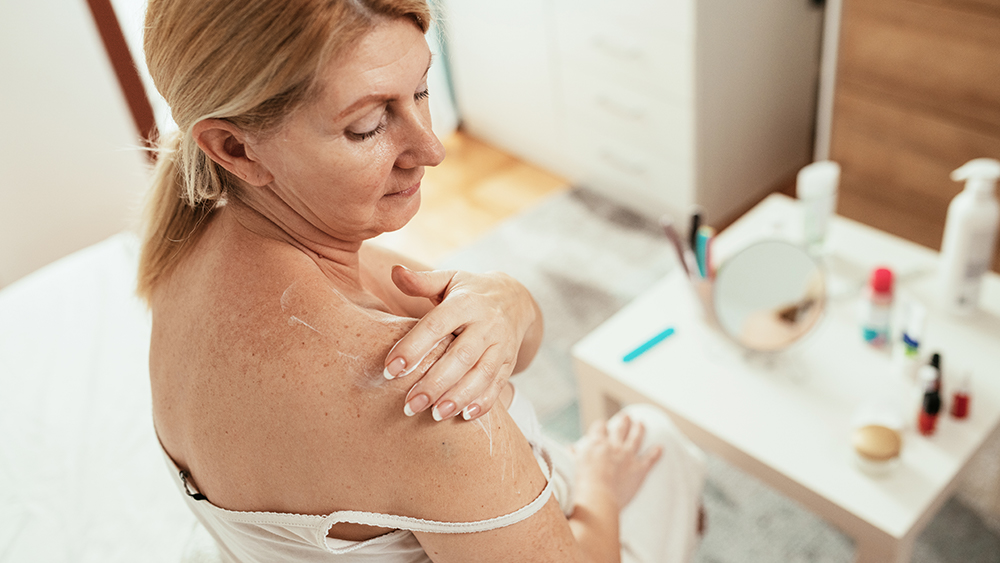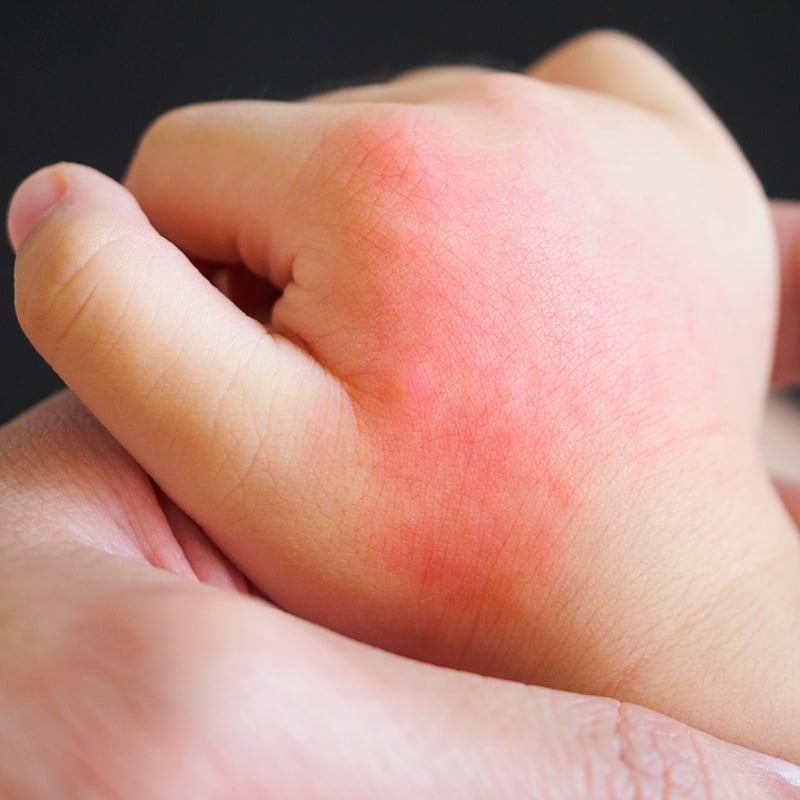The summer has arrived and many of us will be spending more time outside in the sun. While the sun has many health benefits like increased production of vitamin D, it’s important to protect your skin from the harm of ultraviolet (UV) rays by applying sunscreen (or sunblock). The regular application of sunscreen is proven to decrease your risk of skin cancers and precancers and prevents premature skin aging.
“Whenever you’re outside, even on cloudy or cold days, the sun can be harmful,” said Nana Duffy, MD, a dermatologist at the Genesee Valley Dermatology & Laser Center. “Be sure to follow sunscreen application guidelines and other recommendations to look after your skin."
Here’s everything you need to know about sunscreen, how it works, how to apply sunscreen, and Dr. Duffy’s top recommendations.
How does sunscreen work?
Sunscreen contains active ingredients that prevent the sun’s UV radiation from contacting your skin. Mineral sunscreen and chemical sunscreen are two of the main types of sunscreen (more on this below).
Here’s how they work:
- Mineral sunscreen - ingredients include zinc oxide and titanium dioxide. It blocks the sun’s rays before they reach your skin.
- Chemical sunscreen – ingredients include avobenzone and octisalate. It absorbs UV rays before they do damage to your skin.
Many sun protection products available today combine both types of ingredients, and while mineral sunscreens may be less likely to cause skin irritation than chemical sunscreens, both types have been tested as safe and effective, according to the Skin Cancer Foundation.
How does sunscreen protect against skin cancer?
There are more than 196,000 new cases of melanoma each year in addition to the 3.3 million cases of non-melanoma skin cancers that are treated annually in the United States, according to the American Cancer Society.
One of the major risk factors for developing skin cancer is prolonged exposure to UV radiation. Wearing sunscreen is one of the many ways to safeguard your skin from the sun’s UV rays and protect against skin cancer.
Sunscreen also works to prevent premature aging of the skin. Too much exposure to the sun can cause sunspots and other visible skin ailments. These can be reduced by applying sunscreen.
Although there are other ways to stay safe from the sun, you should always wear sunscreen when spending time outside, said Dr. Duffy. This is especially true if you are not fully covered by clothes or seeking shade.
What is SPF?
SPF stands for sun protection factor. It is a number that tells you how long it would take the sun’s rays to redden your skin if you were to apply sunscreen as directed, compared to not ever applying sunscreen.
For example, if you apply sunscreen with an SPF of 30, it would take 30 times longer for you to burn versus using no sunscreen at all.
Levels of SPF
Higher SPFs generally offer greater protection from the sun.
“I recommend wearing sunscreen with an SPF of at least 30,” Dr. Duffy said.
However, as SPF levels reach above 30, the increase in protection between each level becomes very minimal, Dr. Duffy continues.
“Sunscreens with an SPF above 30 are okay to use, but keep in mind that they don’t offer much more protection.”
SPFs higher than 30 are usually more expensive, causing people to apply them less often to save money. This, she explained, can end up causing more harm.
*It’s recommended that patients with a history of melanoma or certain skin conditions that cause increased sensitivity to the sun use the highest SPF possible to ensure maximum protection.
Applying sunscreen: When and how often?
Sunscreen should be applied every two hours while outdoors.
“You should always wear sunscreen outside, but you should also seek shade whenever possible,” Dr. Duffy said. “The sun is the most intense between the hours of 12 pm and 2 pm. Be sure to use several forms of skin protection during this time.”
It’s especially important to apply sunscreen when you are not using other forms of sun protection, like wearing long sleeves, pants, and hats that can help safeguard your body from the sun’s harmful rays.
Different Types of Sunscreen
Mineral sunscreen vs Chemical sunscreen
Most sunscreen products work by reflecting, scattering, or absorbing UV rays. Depending on the ingredients, sunscreen interacts with the skin differently to create a form of protection.
“Mineral sunscreens have ingredients like zinc that work to deflect sun rays. They work like a shield on your skin.”
“Chemical sunscreen contains ingredients like avobenzone or oxybenzone, which work to absorb UV rays and transfer them to heat energy. This keeps the rays from reaching the skin in a harmful way.”
Dr. Duffy recommends mineral sunscreens for use on the face.
Spray sunscreen vs Lotion
In terms of ingredients, spray-on sunscreen and lotion are equivalent. However, the application process can create differences in protection levels.
Spray-on sunscreen can present several complications when it comes to application. When outside, the wind can carry away a lot of the sunscreen and the beneficial ingredients that it contains. Since it’s not being directly placed on the skin, much of the sunscreen can go to waste.
Spray-on sunscreen can also be harmful or disruptive to others. When in public spaces, the sunscreen may spray towards other people, causing them to inhale chemicals that are not meant to be inhaled.
“If you’re at a crowded beach, the park, or another public place, it’s best to walk away and find a space to spray on your sunscreen. This will ensure you’re not disturbing others. The best way to apply spray-on sunscreen is to spray it in the palm of your hand and apply it directly to the skin to ensure full coverage.”
Although lotion is recommended, using spray-on sunscreen is better than not using sunscreen at all, Dr. Duffy added.
Sunscreen Recommendations
For adults:
- Neutrogena Dry Touch: contains helioplex, which protects the skin from UVA and UVB rays
- Vanicream: the best option for those with sensitive skin
- Elta MD
- Hampton Sun
For adults with darker skin complexion:
- Avene
- La Roche-Posey
- Revision
Best for kids
In some cases, lotion can ensure your child is better protected than spray-on sunscreen. It can be difficult to get children to stay still when applying sunscreen, so spray-on may not cover them completely, which can expose uncovered areas of the body. Mineral-based sunscreen is preferred for children.
Certain brands aim to make using sunscreen more fun for kids. Blue Lizard sunscreen comes in a bottle that changes color when in the sunlight, indicating that it should be applied.
“It’s important to encourage children to regularly apply sunscreen and make a habit out of it. Adding some fun to the process can help children become more inclined to apply sunscreen on their own,” said Dr. Duffy.









